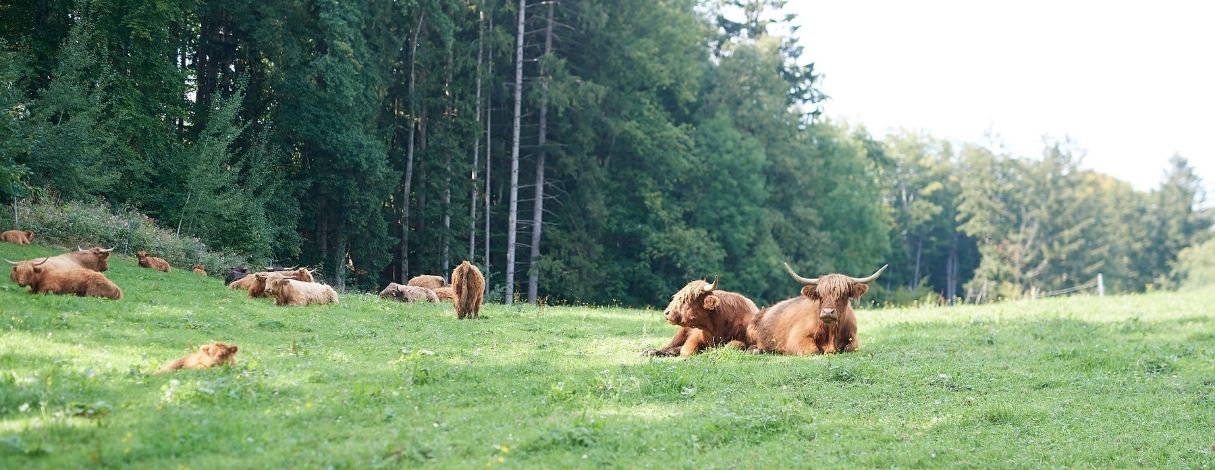

Themen
Meistgelesene Artikel
- Homemade New York Style Pastrami Sandwich
- Homemade New York Style Pastrami Sandwich
- Homemade New York Style Pastrami Sandwich
- Homemade New York Style Pastrami Sandwich
- Osterschmankerl & Bräuche: Alles rund um das Osterfest
- Dry-Aged Beef: Genusserlebnis durch gezielte Fleischreifung
- Ganslzeit: Martini Gansl richtig zubereiten | Rezept
Lesezeit: 11 Minuten
Regionality: What we mean by it!
Organic, regional, sustainable, animal welfare - they are all incredibly important aspects that are increasingly used by supermarkets and discounters as mere buzzwords. If you look at the advertising messages of food companies, hardly any advertising can do without one of these terms. Especially the good "animal welfare" is literally cannibalised.
These terms, or buzzwords, are meant to suggest to customers that they are doing something good by buying these products. However, it is not at all clear what the respective companies mean exactly by "regionality" and "animal welfare". Reason enough to give you an insight into Fitmeat's way of thinking and philosophy - because we mean what we say and you get exactly what you see.
What regionality means to us
When we talk about regionality, it means to us that 100% of our meat products are sourced from small Austrian farmers. We therefore take particular care when selecting our partner farms. It is important to us that the farmers share our philosophy and pay attention to respectful handling and species-appropriate husbandry of the animals.
What does 4xAT mean for meat products?
Regional production from start to finish
All our cattle breeds are 4xAT certified. This means that all animals are born, raised, slaughtered and processed in Austria. At no point does even a fraction of the process take place outside of Austria. Exactly the same applies to our Austrian straw pigs, our geese, chickens and ducks.
What distinguishes high-quality regional meat?
Top quality meat needs patience
For a while, animals of an older age were considered "inedible". The trend was young bulls and co. A characteristic that many consumers associate with qualities such as "young", "strong" and "healthy". However, it is anything but.
Because many cattle are slaughtered at a young age of 12 - 24 months. This is neither advantageous in culinary terms nor in terms of "animal welfare". Why is that? Because good meat needs time.
When animals are slaughtered at such a young age, they have to reach their optimal slaughter weight within a very short time. It is clear that this cannot happen naturally.
Therefore, the animals are fattened in record time to guarantee the highest possible meat yield. This is neither nice for the animal nor good for the taste. The meat has hardly any flavour of its own, has a coarser structure, is lean and watery.
Cattle breeds must grow slowly
For us, species-appropriate animal husbandry and genuine meat enjoyment are inevitably linked. That is why our animals grow up much more slowly and naturally. When feeding them, we completely avoid the addition of concentrated feed or similar. Only high-quality, natural feed is used.
This slow rearing of the animals means that the muscle meat is finer-fibred and therefore particularly tender. In addition, the animals have a much finer marbling, i.e. fat deposits. It is precisely this fine marbling that ultimately affects the enjoyment.
Compared to animals raised for fattening, the fat is finer and more evenly distributed in slow breeding. With record breeding, on the other hand, coarse fat clusters develop. And the finer these small fat deposits are, the more tender the meat becomes.
Stress-free butchering without long animal transport
Our demand for respectful treatment of the animals and regional production does not end with the time spent on the farm. It extends to the point where the meat is served on our customers' plates.
Of course, this also applies to the slaughtering process, because we strictly distance ourselves from long animal transports, which only cause unnecessary stress. All of our animals are therefore slaughtered either directly on the farm itself, or a maximum of 15 minutes away at a master butcher's shop.
Stress-free handling is just as important to us as respectful individual slaughter of the animals. In addition to empathy for the animals, this requires above all flexibility. Because high-quality meat is only produced when the animals do not release any stress hormones.
Following this process, the animals are processed by our traditional butchers and refined to premium cuts in the highest art. This is of course accompanied by the well-known dry maturing process, which also takes a good amount of time.
Sustainability in production and shipping
Deliveries at Fitmeat
Our cuts are prepared on demand and delivered fresh. This means that the majority of our range is already sold out by Thursday of each week. What does this have to do with sustainability? Quite a lot, we would say.
Because we are committed to a conscious and celebratory consumption of meat and only order as much as we need for our customers. This means that no cut is left lying around or even wasted.
We check the fresh cuts again for quality and then pack them sustainably. Here, too, we pay attention to high-quality packaging material that does not use plastic. The cuts are wrapped in a special insulating layer of paper and perfectly cooled with reusable cold packs.
For us at Fitmeat, buying meat is a matter of trust and our products should really be enjoyed. That's why for us, regionality goes far beyond the plate!
You can find more information about our farmers, butchers and our animals on our website under the category "Origin".
